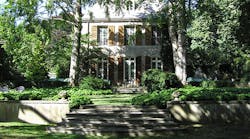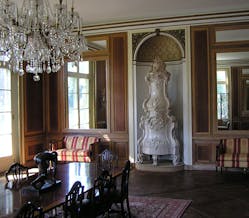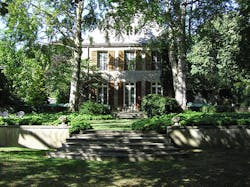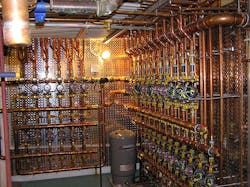To distribute hot water, 25 Ecocirc vario circulator pumps from Bell On top of that, the boiler was subject to breakdowns that were becoming more and more difficult to deal with. “Every time we did a repair job it was costing $10,000,” Ward said. “I would have to bring in a couple professionals, wait for them to give up, jump in, bring in the block and tackle… just really difficult.” Custom parts needed to be fabricated, mountings needed to be re-cemented. Even for a family that was only occasionally using the property, the situation was becoming intolerable. Almost three years ago Jeff Ward got the green light from the owners to design and install a new hot-water-based heating system with a modern, efficient mod-con boiler at its heart. But there was a catch: the owners wanted to keep the vintage radiators that added so much to the look and feel of the mansion. While beautiful, the radiators did not work well with moving water. “The baffles were too thin,” Ward said. “I couldn’t get them to aspirate, I couldn’t get them purged completely. So they were a real battle.” Additionally, many of the radiators were in different sizes and configurations, making it a nightmare to accurately size the new system. Ward and his team spent almost two years cleaning the existing radiators. All 67 (weighing on average 250 lb., with the heaviest being 600 lb.) were taken outside, rinsed in muratic acid and washed with CLR before being reinstalled. Ward also built his own radiators inside the existing “shells” using 1-in. copper tube with 4-in. fins, overlapping and putting as much tubing as possible into the available space. In addition, Ward installed about 4,000-sq.ft. of radiant floor heating throughout the home, mostly using Viega Climate Trak. “It’s a snap-on product,” Ward explained. “8 ft. long panels, 4-in. wide aluminum with a centered ½-in. tube you snap your tubing into. They are made for retrofits. They work like a big heat sink. You screw those up in each bay, then insulate heavily.”






